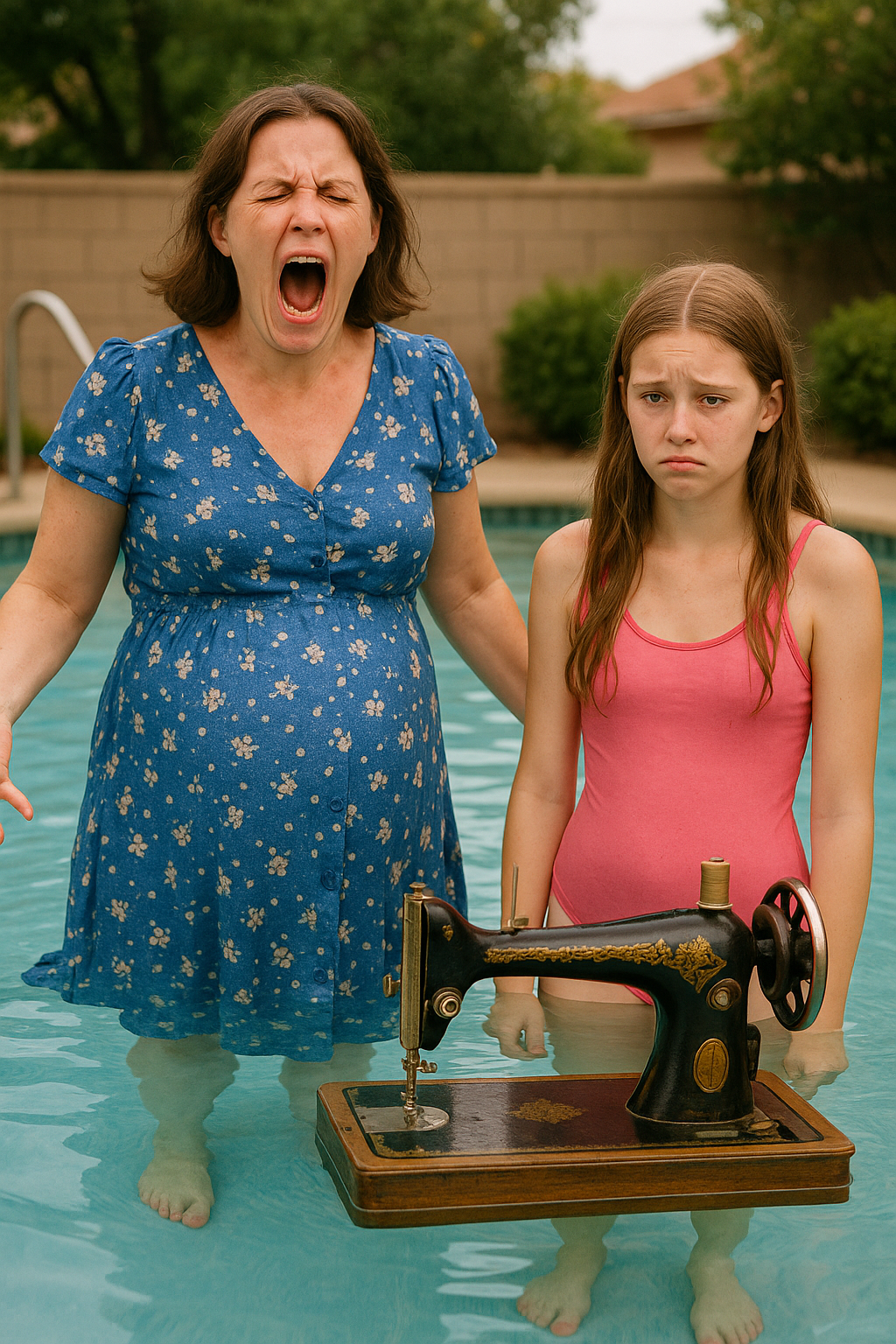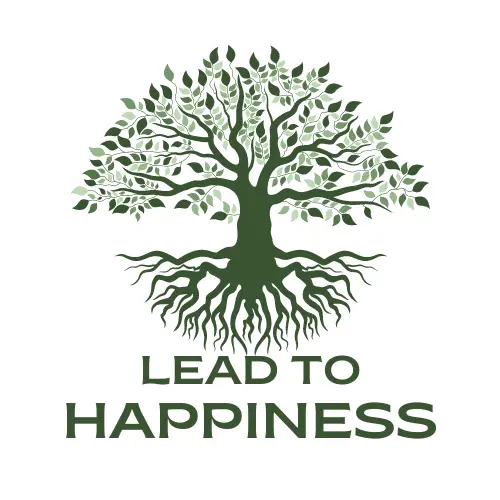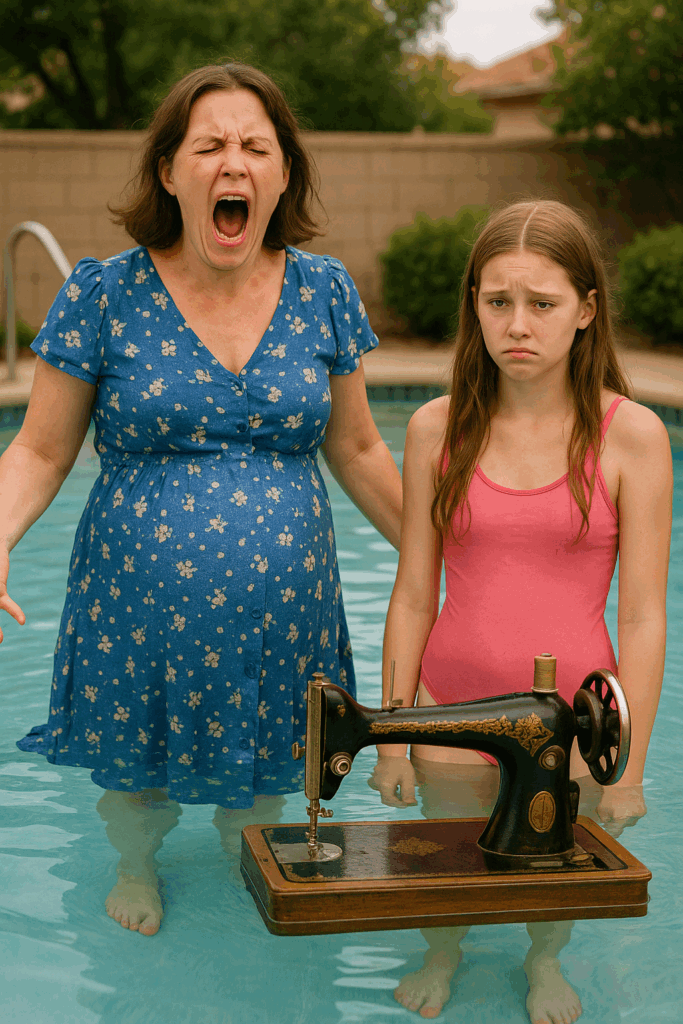When the sewing machine hit the water Lily exploded. She dropped into the flagstones and leaned over the edge of the pool and the sound she made — not a scream exactly but a cracking of something central — will stay in my ears for the rest of my life.
I had taught her to balance school, work, and saving like lessons in arithmetic and grit. For six months she had babysat, pieced together tote bags, sold them online for $8 or $12 at a time. She carried her earnings in an envelope with “Sewing” written on it in marker. That Janome was not a toy; it was a plan, a hope she cradled like a secret treasure.
Rachel thought it was funny. Mark didn’t move. The dog — a brindled mutt named Parker — sat on the patio, head cocked, like some old sentinel who kept watch of all our small cruelties.
When I walked out with the groceries and saw the machine bobbing on the bottom, Lily bent over the water like she could fish months back into her life with the flimsy scoop of two hands. Rachel, with that smile that belonged to someone who had never had to choose between empathy and convenience, clapped once. “Good lesson,” she said. “She’ll remember to do things on time.”
It’s easy to imagine a story where I explode. A story where I smash porcelain and swear and teach them the meaningful violence of my fury. But loud fury can be messy and can also leave the person it’s intended to teach feeling persecuted rather than enlightened. I wanted them to know precisely how it feels to have what they cherish taken from them and then to have to answer for it, to watch their lives change because someone else remembered them.

I watched Rachel’s face when Lily begged and Mark tried to move toward the edge and made no real effort. That same inertia, that same reluctance to make things right, had to be addressed with an action that had rules and witnesses and consequences. So I did three things: I recorded, I documented, and I made a plan.
After I called my sister, I dialed the number for a friend who runs a local craft nonprofit — two sentences and she was on her way with boxes of donated thread and machines older than Lily but whole. I filed the police report that evening and told them, calmly, exactly what I had seen. The officer asked for the video. I told him where to find it. I asked for a copy of the report number because you never get protection if you don’t leave a paper trail.
Then, quietly, I did something else — one of those quiet maneuvers that doesn’t scream but erodes a life: I called the landlord and the homeowner’s association. Mark’s access to our old account was dependent on the house being jointly maintained; vandalism on the property reflecting negligence could shift legal obligations. I gave the HOA a recorded statement. I let the bank know there was suspicious movement. These are not exciting acts. They are the tedious, textile-like stitches that hold a garment together. But they pulled at the fabric of what Mark and Rachel thought was impunity.
People came. The sewing mentor arrived with a box of spools and a promise. A retired tailor offered to lend Lily an industrial machine for weekends. Neighbors brought towels and lemon-scented soap and a cooler of iced tea. The little girl down the block whose mother had once been the kind of stepmother that taught us to give up—she knocked and left a hand-drawn card: We’re sorry. You’re not alone.
But there is a lesson that hurt might require beyond replacing stuff. We needed the mirror reflection. We needed them to look and see themselves as others saw them.
When the police report was processed the district services investigator came by. They look for patterns. They look for neglect, for emotional harm. We were meticulous: receipts, messages, the video of Rachel — smiling as the machine sank — the half-hearted apologies afterwards, the shrugged rationalizations. The investigator asked gentle questions of Lily and me in separate rooms. The investigator asked Mark to provide his bank statements.
Rachel and Mark thought silence would shield them; the law often waits until someone shows up to require action. The investigator did not arrive with malice. She arrived with a clipboard and a kind of slow, determined fairness.
Mark’s bank showed something odd: he’d moved small sums from the account Lily used for her online sales into a joint account with him and Rachel. He’d been redirecting the child’s earnings to fund lifestyle choices that included a pricey subscription box Rachel always bragged about. It was legal — borderline — but morally ruinous. Those small transfers explained their cruelty: Lily’s independent income was an irritation because it cut into an unspoken arrangement. When the sewing machine landed in the pool, it was the final, ugly gesture designed to silence her independence.
The district investigator flagged it for restitution and mandated parenting classes for Mark and Rachel. The HOA levied a fine for negligent conduct. Rachel’s employer — an up-market boutique whose brand cultivated goodwill — received the summary of the complaint. They put her on leave pending an internal inquiry. I did not gloat when that happened. I sat across the kitchen table from Lily and watched her stitch a small patch on her worn denim jacket, the fabric catching needle-light like a tiny bright future.
There was a different twist, one that felt smaller but kinder. The community’s response turned into more than a stopgap. A small business owner who’d been touched by our post offered Lily a paid weekend apprenticeship building dresses for a local theatre company. The owner told me: “Give her a chance. We lose something when we let kids’ dreams sink like stones. We need people who watch these things go under to instead pull them up.”
Lily apprenticed. She learned pattern-making and the geometry of hems. She became fierce. She was stubborn in a way that made me proud and ache at once. And the day we sold her first original tote bag at the Saturday market, she counted the dollars and wrote them into a new envelope. She was learning to take her setbacks and turn them into fabric — literally.
What did Rachel learn? That was left open. There were consequences: replacement, public censure, professional scrutiny. She lost the casual knowing that she could twist someone’s life and walk away. Mark lost the comfortable silence of complicity. They had to explain themselves to people beyond our kitchen.
We could have burned them in the town square. Instead, the community organized an event: Patch and Repair — a free workshop for teens where people could bring something broken and learn how to fix it. I asked Lily if she wanted to teach a class—she did—and we paired it with a talk on financial literacy. The smallest, most practical revenge, I realized, was to make their cruelty the engine that powered a public resource. Make their wrong into a right for others. Let bad behavior seed something useful.
On the night before Rachel left, she came to the back gate and left a note in the mailbox. Short. “I’m sorry,” it read, in those self-satisfied letters that sometimes hide deeper strangeness. She was gone two days later. We didn’t hold on to rage; it only entangles. Instead we picked up stitches. We sewed a small banner for the market: Dreams Repaired, Hands Together. On the day of the first workshop, Lily stood at a table under a striped tent and showed a dozen teenagers how to thread a bobbin. She did not brag. She simply did the work. Parents stopped and watched. Someone recorded the class and posted it. The video went quiet-viral in our town.
I still think of Rachel sitting at a café somewhere, perhaps eating something she used to eat at our place, and I wonder if she remembers the precise angle of Lily’s hands as they braided cloth, or if she even thinks about the pink sewing machine she lost under water. Maybe she’ll never change. Maybe she’ll hide her cruelty better next time. I do not know.
What I do know is this: when people take what you love, the first thing is to secure the child. Then you build proof. Then you use that proof not to destroy but to construct something that makes the loss matter beyond personal pain — for the child, for the community, for anyone who might otherwise become a perpetrator.
We taught a lesson. It was not in the pool. It was in the record, the counsel, the new machines humming at the community center. It was in the boutique owner calling Lily with a real opportunity. It was in the class that taught kids to thread a bobbin and to count every cent down to its smallest stitch.
At night Lily sleeps under a quilt she made with her own hands. The patchwork tells the story. The doubled threads hold the future together. She still glances sometimes toward the gate, expecting Rachel’s silhouette. But most mornings she runs to the table with a sandwich and a grin and asks if we can practice darts on the seam allowance she’s designing.
The machine never came back up from the bottom of that pool. The bubbles rose and disappeared. But we learned how to pull other things up: dignity, accountability, and a stubborn, quiet, community-fueled promise that whatever you throw into water in this town, someone will dive in.
And sometimes that is enough.


